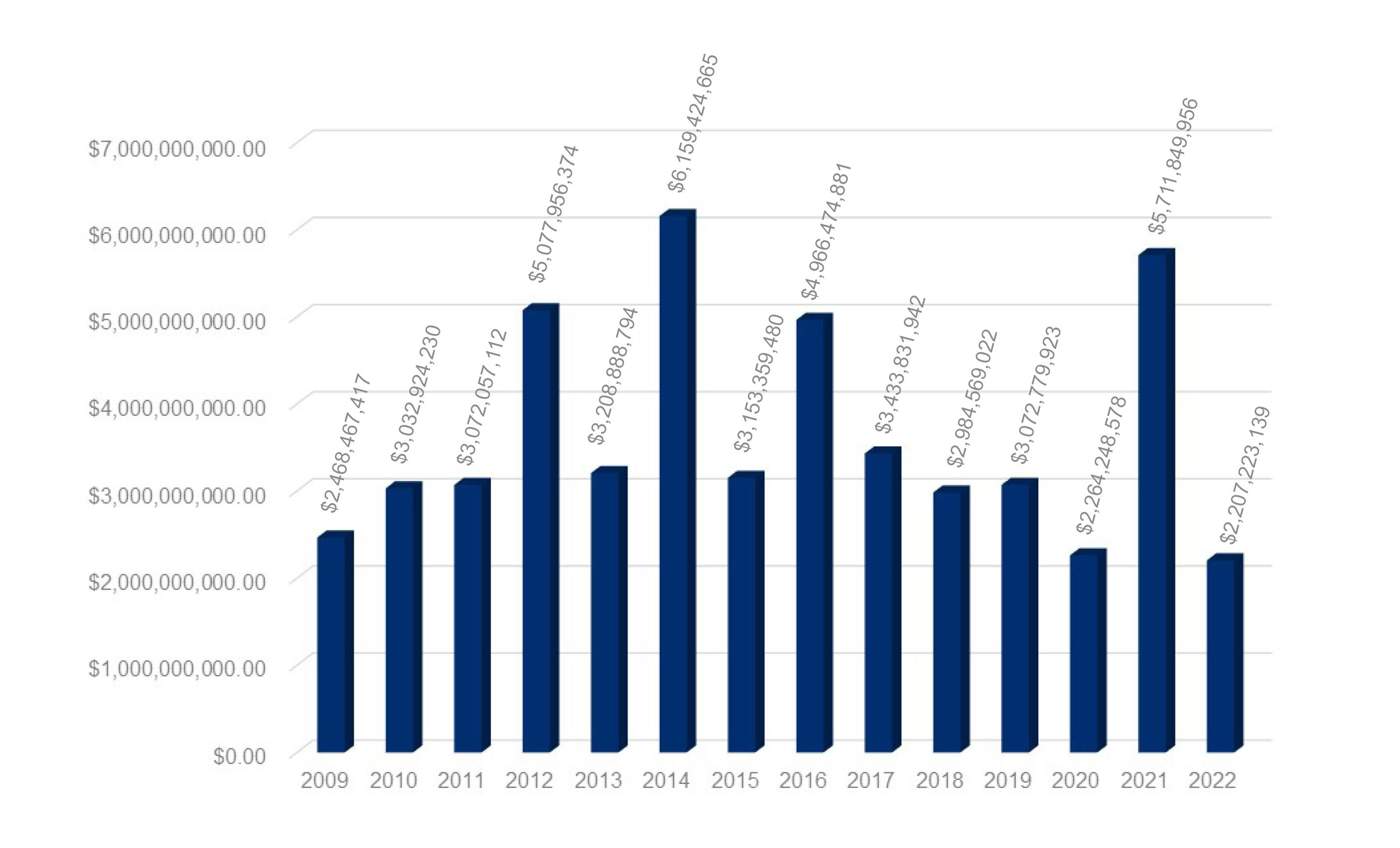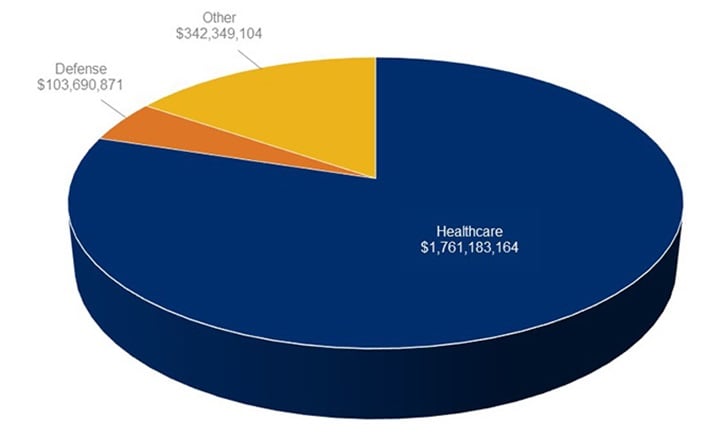DOJ Announces Lowest Annual False Claims Act Recoveries in a Decade: $2.21 Billion in FY 2022
Late last night, the Department of Justice (DOJ) announced its annual False Claims Act (FCA) recovery statistics. For fiscal year 2022 (which ended September 30, 2022), DOJ reports $2.21 billion in FCA recoveries, coming just below its total of $2.26 billion from two years ago when recoveries had seemed to dip at least in part due to the Covid-19 pandemic. We at Qui Notes had predicted $2.63 billion in recoveries and will be reviewing the data to determine the discrepancy.

Certainly, no one expected DOJ to match FY 2021 when DOJ touted that it had recovered the highest total since 2014 at $5.7 billion, largely due to the settlement of FCA-related opioid claims with Purdue Pharma, which was the largest FCA settlement ever at nearly $3 billion (i.e., more than the entirety of FY 2022’s recoveries). Like the FY 2020 data, the FY 2022 data show a drop-off from the 2010s, when annual recoveries routinely topped $3 billion. Rather than acknowledge any drop off in total recoveries, DOJ’s press release instead focuses on the fact that the government and whistleblowers were party to 351 settlements and judgments, the second-highest number in a single year. DOJ also reported that it paid out over $488 million to relators in FY 2022, up significantly from the $263 million it paid relators in FY 2021.

The vast majority ($1.7 billion) of the $2.2 billion for FY 2022 consists of matters relating to the Department of Health and Human Services (HHS). About $100 million came from the Department of Defense (DOD), with the remaining amount of about $350 million consisting of “other” matters. In the “other” categories, DOJ unsurprisingly included Covid-related fraud and cases brought under DOJ’s civil cybersecurity initiative, two priority areas of FCA enforcement. Just under $2 billion came from qui tam actions, consisting of about $1.2 billion in actions in which DOJ declined to intervene, and about $777 million in actions in which it did intervene. Approximately $250 million was from non-qui tam suits.
While the dollar value of recoveries is low compared to prior years, one takeaway is that the sheer number of FCA cases filed last year was a significant increase from recent years. In total, the 948 new FCA cases in FY 2022 are the highest for any year on record. This record is driven primarily by the number of non-qui tam suits newly filed in FY 2022—296, the highest since 1993 (and the third-highest since DOJ began publishing its annual statistics in 1987). While not quite as much of an outlier, the number of new qui tam cases filed (652) is also substantial. Between the two, it is clear that FCA activity is continuing at a brisk clip. Both numbers are significant jumps up from FY 2021 (which saw 212 non-qui tams and 598 qui tams), suggesting that any damper the pandemic had put on new suits has been lifted.
Digging further into the new-case numbers, the increase in non-HHS, non-DOD suits is particularly notable. New HHS cases are down slightly from FY 2021 (from 491 to 464, which continues a slight downward trend over the last five years), and new DOD cases increased by 13 (from 53, though there is no discernable trend in DOD suits over the last five years). But cases in the “Other” category went up from 266 last year to 418 this year, with substantial increases in both qui tam (182 to 241) and non-qui tam (84 to 177) cases. This could well reflect the impact of pandemic-related programs both on DOJ’s enforcement priorities and on relators’ attention.
Continue to monitor Qui Notes for more FCA developments as the new year unfolds.
© Arnold & Porter Kaye Scholer LLP 2023 All Rights Reserved. This blog post is intended to be a general summary of the law and does not constitute legal advice. You should consult with counsel to determine applicable legal requirements in a specific fact situation.


